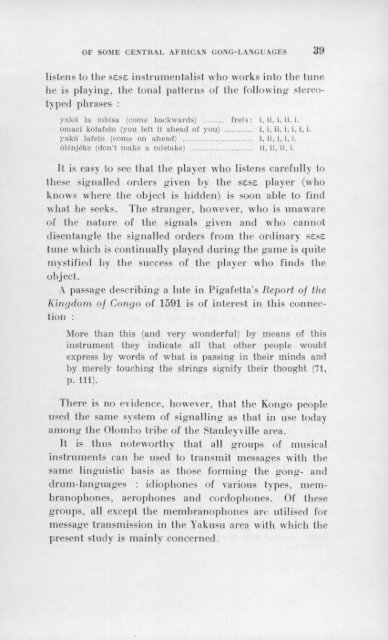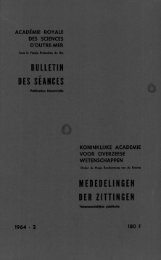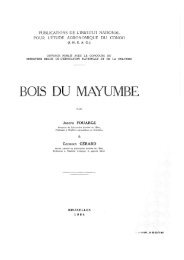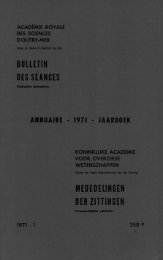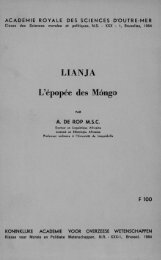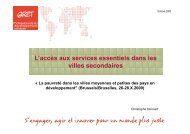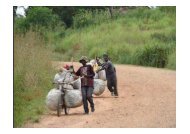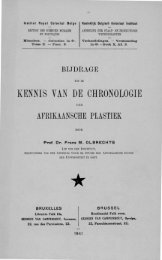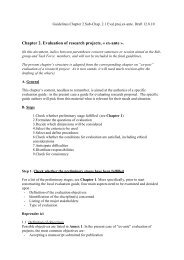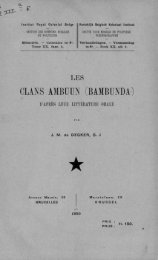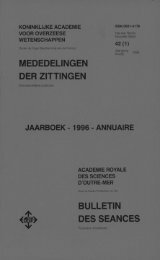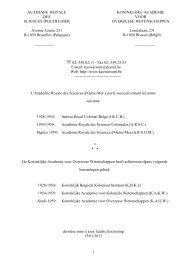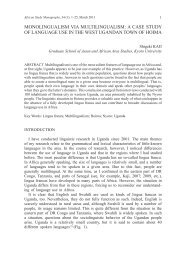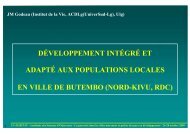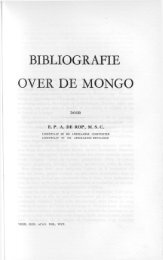CENTRAL AFRICAN GONG-LANGUAGES
CENTRAL AFRICAN GONG-LANGUAGES
CENTRAL AFRICAN GONG-LANGUAGES
- No tags were found...
You also want an ePaper? Increase the reach of your titles
YUMPU automatically turns print PDFs into web optimized ePapers that Google loves.
OF SOME C E N T R A L A F R IC A N G O N G -LA N G U A G E S 39listens to the sese instrumentalist who works into the tunelie is playing, the tonal patterns of the following stereotvpedphrases :yakû la mbisa (come backwards) ........ frets : i, ii, i, ii, i.omaci kolafelo (you left it ahead of you) ........... ..i, i, ii, i, i, i, i.yakti lafelo (come on ahead) .............................. ..i, ii, i, i, i.ólénjéke (don’t make a mistake) ........................... ..ii, ii, ii, i.It is easv to see that the player who listens carefully tothese signalled orders given by the sese player (whoknows where the object is bidden) is soon able to findwhat be seeks. The stranger, however, who is unawareol' the nature of the signais given and who cannotdisentangle the signalled orders from the ordinary sesetune which is continually played during the game is quitemystified by the success of the player who finds theobject.A passage describing a lute in Pigafetta’s Report of theKingdom of Congo of 1591 is of interest in this connection:More than this (and very wonderful) by means of thisinstrument they indicate all that other peoplewoulolexpress by words of what is passing in their minds andby merely touching the strings signify their thought (71,p. 111).Ihere is no evidence, however, that Ihe Kongo peopleused the same system of signalling as that in use todayamonof the Olombo tribe of the Stanleyville area.It is thus noteworthy that all groups of musicalinstruments can be used to transmit messages with thesame linguistic basis as those forming the gong- anddrum-languages : idiophones of various types, membranophones,aerophones and cordophones. Of thesegroups, all except the membranophones are utilised formessage transmission in the Yakusu area with which thepresent study is mainly concerned.


